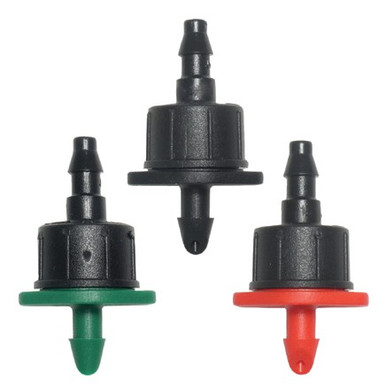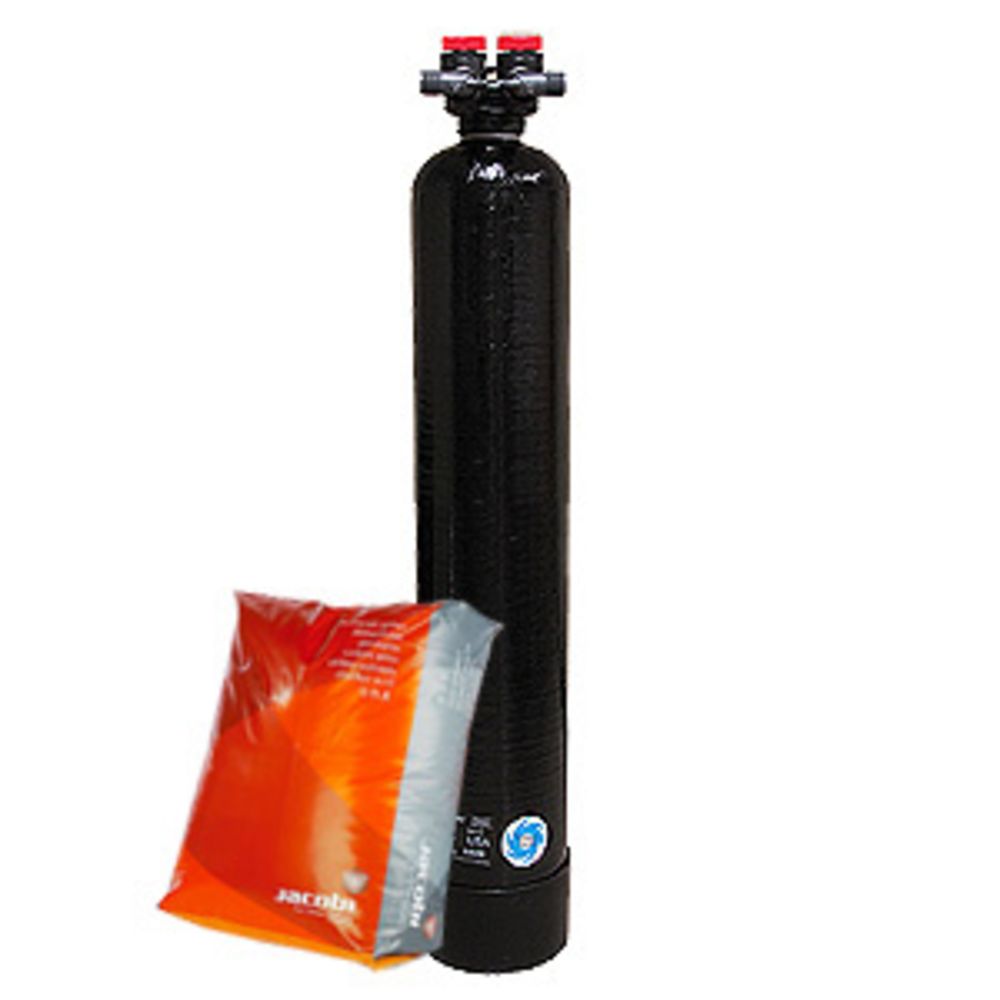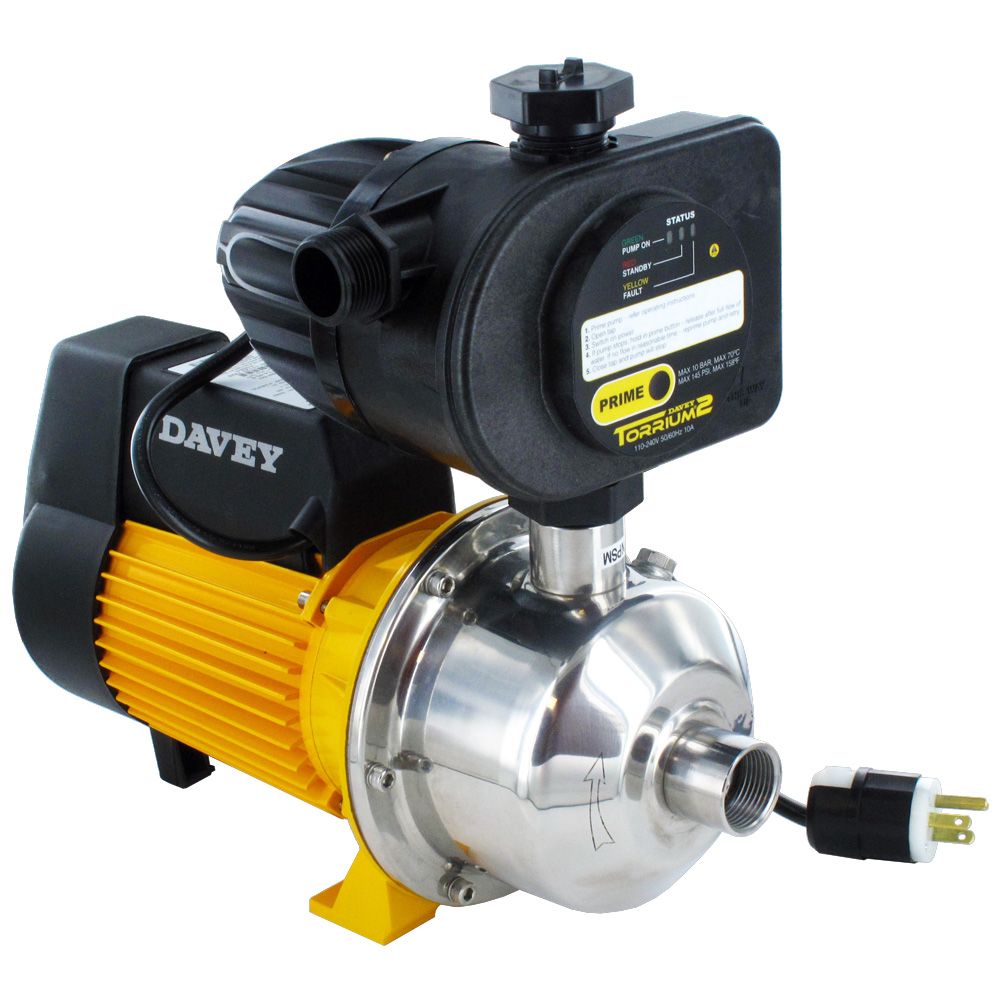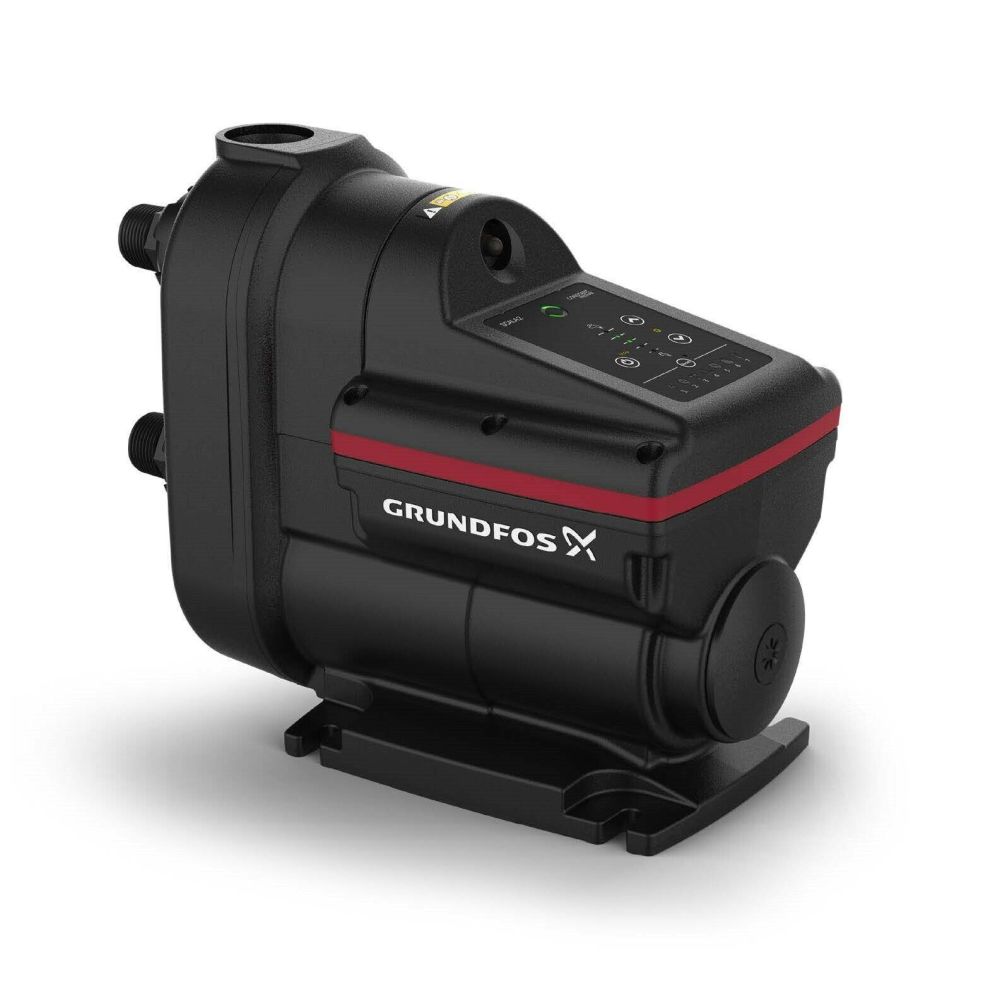Well I am open to learning something new if you can explain why this setup is advantagous and how you would elevate this small tank.The pump is used continuously to maintain constant water depth on the header tank. Deliberately over supplying and using stand pipe to return excess back to your main storage. This pump doesn't need to be large for constant slow feeds. There are quite a few advantages to this which I won't bother explaining as it doesn’t sound like the solution for you.
Yes - you can put 1000 gallon (and more) above your tanks this way.
Is stainless steel ok for ro water pump and rate set valves ?
- Thread starter jake37
- Start date
The best advantages will depend on what you value the most.
Consistency (uniform water pressure):
Having an open gravity header tank allows you to have a reliable consistent water pressure regardless of how many taps you open and close or how quickly or frequently you do this. All tanks within 50cm water heights of each other will have the same or very similar water pressure. Tanks on a lower tier would have the same water pressure as each other but slightly different than the higher tiers. Even precision pumps suffer from variable water pressure - electrical surges, bio film build up in pipes, air pockets and cavitation issues. If you look at hydraulic flow formulas, water pressure affects so many things.
A simple header tank could be a 100mm pipe (elbow and open at each end) running above your tanks or a central tank on top of your roof or within the ceiling
space. The higher the header tank, the more water pressure you achieve. Some float valves require a minimum water pressure to shut off for example.
Cost: Self evident but if you run say 200 tanks, even a $3 saving per tank quickly adds up
Simplicity: Self evident but the time saving in trouble shooting issues is important
Maintenance: Very easy to visually check
Reliability: Gravity feed is simple and problem free. You can use two water pumps to maintain the water level in header tank if water supply is critical. Such as tumbling fish eggs. You should have at least one mixing pump on your main storage tank anyway to prevent stratification issues - water chemistry, temperature, oxygenation etc.
All that said, it sounds like pressure compensating drippers would suit you best.
I have about 200 small tanks - hatching jars on a header tank and about 300 tanks on drippers. I have central filters mostly so I don't need drippers on each tank.
Consistency (uniform water pressure):
Having an open gravity header tank allows you to have a reliable consistent water pressure regardless of how many taps you open and close or how quickly or frequently you do this. All tanks within 50cm water heights of each other will have the same or very similar water pressure. Tanks on a lower tier would have the same water pressure as each other but slightly different than the higher tiers. Even precision pumps suffer from variable water pressure - electrical surges, bio film build up in pipes, air pockets and cavitation issues. If you look at hydraulic flow formulas, water pressure affects so many things.
A simple header tank could be a 100mm pipe (elbow and open at each end) running above your tanks or a central tank on top of your roof or within the ceiling
space. The higher the header tank, the more water pressure you achieve. Some float valves require a minimum water pressure to shut off for example.
Cost: Self evident but if you run say 200 tanks, even a $3 saving per tank quickly adds up
Simplicity: Self evident but the time saving in trouble shooting issues is important
Maintenance: Very easy to visually check
Reliability: Gravity feed is simple and problem free. You can use two water pumps to maintain the water level in header tank if water supply is critical. Such as tumbling fish eggs. You should have at least one mixing pump on your main storage tank anyway to prevent stratification issues - water chemistry, temperature, oxygenation etc.
All that said, it sounds like pressure compensating drippers would suit you best.
I have about 200 small tanks - hatching jars on a header tank and about 300 tanks on drippers. I have central filters mostly so I don't need drippers on each tank.
Another option might be dosage pump. I'm trying to visualize how i would mount a 1 gallon tank above or on an aquarium. There is also concern about the float swithes and increase failure points. With the dripper the biggest concern would be drift from target flow and measuring such. Most of the wtaer meters i can find on the market not sensitive enough to measure the flow i want to target. I can insert a precision value before the tube to the dripper which can limit the flow to the dripper but not doesn't really solve the issue of determining actual flow into the aquairum.
Pressure Compensating drippers will put out the exact volume per hour regardless of your pressure, regardless of terrain, regardless of differences in water head (heights), hose - pipe lengths, water temperature etc. As long as the hose pressure is not lower than the minimum requirement and not so high that water leaks occur. Pre filters are recommended and place the drippers above water level for visual confirmation.
I used to measure the outputs but stopped many years ago because the output volume accuracy was consistently fantastic.
I generally use 4 LPH (almost 100 Litres per day) but occasionally use 8 LPH. And can add as many drippers as you require.
All of this info I've already provided.
The drippers cost like 15 to 25 cents each. Why don't you try some out and measure the water output over a week?
I used to measure the outputs but stopped many years ago because the output volume accuracy was consistently fantastic.
I generally use 4 LPH (almost 100 Litres per day) but occasionally use 8 LPH. And can add as many drippers as you require.
All of this info I've already provided.
The drippers cost like 15 to 25 cents each. Why don't you try some out and measure the water output over a week?
You lost me a bit. I believe i started with using emitters (I believe these are the same as pressure compensating drippers; please correct me if i am mistaken); and then i think you suggested putting water tanks above the aquarium; but now we are back to using emitters.
I'm not sure how to insert a filter infront of them (or after them but perhaps you can link some products). The emitters i was considering was something like this:

 www.dripworks.com
www.dripworks.com
The tank is around 550 gallons (10x4x22 (ft,ft,inch)); so my thought was 0.5 gph filter water and 1 gph ro water for 1.5 gph. This would be 252 gallons/week.
I'm not sure how to insert a filter infront of them (or after them but perhaps you can link some products). The emitters i was considering was something like this:

CETA PC Emitters
DripWorks' Ceta PC Emitters are the perfect solution for watering plants. With a flow rate of 1/2 GPH,1 GPH and 2GPH, these durable emitters, are easy to clean and provide the perfect amount of water for your plants, ensuring healthy growth and development. Order now and enjoy hassle-free watering!
The tank is around 550 gallons (10x4x22 (ft,ft,inch)); so my thought was 0.5 gph filter water and 1 gph ro water for 1.5 gph. This would be 252 gallons/week.
Pressure Compensating drippers will put out the exact volume per hour regardless of your pressure, regardless of terrain, regardless of differences in water head (heights), hose - pipe lengths, water temperature etc. As long as the hose pressure is not lower than the minimum requirement and not so high that water leaks occur. Pre filters are recommended and place the drippers above water level for visual confirmation.
I used to measure the outputs but stopped many years ago because the output volume accuracy was consistently fantastic.
I generally use 4 LPH (almost 100 Litres per day) but occasionally use 8 LPH. And can add as many drippers as you require.
All of this info I've already provided.
The drippers cost like 15 to 25 cents each. Why don't you try some out and measure the water output over a week?
Yes, I provided two options and there would be others.
The PC drippers seem the simplest for you and you only have one fish tank but like all things in life, a bit of experience is the best way to determine what works best for you. (Everyone has different priorities of importance and implementation).
The emitters you linked are pressure compensating according to their description. It's easy to add a pre filter - maybe a sponge? but not essential. Those ones can be pulled apart to flush clean. Very easy to measure drip rates to determine accuracy.
If your RO system produces consistent water output volume, you can add tap water to your storage bin at desired rate using PC drippers. Then simply deliver your mixed storage water, no requirement for precision delivery as it's pre-mixed.
If your RO system produces inconsistent water output, you would use PC - drippers to delivery precise RO water to fish tank and PC - drippers to deliver precise mains water to tank.
It's up to you to decide what is best.
Why are you so concerned with the delivery accuracy?
The PC drippers seem the simplest for you and you only have one fish tank but like all things in life, a bit of experience is the best way to determine what works best for you. (Everyone has different priorities of importance and implementation).
The emitters you linked are pressure compensating according to their description. It's easy to add a pre filter - maybe a sponge? but not essential. Those ones can be pulled apart to flush clean. Very easy to measure drip rates to determine accuracy.
If your RO system produces consistent water output volume, you can add tap water to your storage bin at desired rate using PC drippers. Then simply deliver your mixed storage water, no requirement for precision delivery as it's pre-mixed.
If your RO system produces inconsistent water output, you would use PC - drippers to delivery precise RO water to fish tank and PC - drippers to deliver precise mains water to tank.
It's up to you to decide what is best.
Why are you so concerned with the delivery accuracy?
The system i envision is water -> tankless water heater -> filter 1 -> filter 2 (I'm paranoid) -> ro unit -> storage bin -> well pump -> ro bladder tank -> pipes
So the pressure is within range of the output of the bladder tank (there is a branch after filter 2 that goes to a storage bin for filtered water); there is a temp valve that takes water that by-pass the tankless water heater and mixes it before fitler 1 to desired temp (approx 78).
The concern i had with the drippers was mostly drift as I will have
ro water -> dripper-a --->\
xxxxxxxxxxxxxxxxxxxxxxx->------>nto tank
filter water-> dripper-b-->/
It is ok if the rate of the drippers is not absolute as label though i would like it fairly close to get the appropriate mix of filter water and ro water but i don't want too large of a drip over time. I will use something like a apex or bluelab system to monitor the tanks tds so if it does drift too far i'll get an alert.
The other concern with the drippers is water wastage. Right now my thought is dripper a will be 1 gph and dripper-b 0.5 gph for a 60% reduction in filtered tap tds but the actual ratio will depend on what comes out of the filter. I don't really know their output. I can't find a meter to measure such slow rate of water movement. I could 'test' the dripper by having the output go into a pail and see how full it gets after an hour but that's a one off if the dripper drifts over time.
So those are my cocnerns.
So the pressure is within range of the output of the bladder tank (there is a branch after filter 2 that goes to a storage bin for filtered water); there is a temp valve that takes water that by-pass the tankless water heater and mixes it before fitler 1 to desired temp (approx 78).
The concern i had with the drippers was mostly drift as I will have
ro water -> dripper-a --->\
xxxxxxxxxxxxxxxxxxxxxxx->------>nto tank
filter water-> dripper-b-->/
It is ok if the rate of the drippers is not absolute as label though i would like it fairly close to get the appropriate mix of filter water and ro water but i don't want too large of a drip over time. I will use something like a apex or bluelab system to monitor the tanks tds so if it does drift too far i'll get an alert.
The other concern with the drippers is water wastage. Right now my thought is dripper a will be 1 gph and dripper-b 0.5 gph for a 60% reduction in filtered tap tds but the actual ratio will depend on what comes out of the filter. I don't really know their output. I can't find a meter to measure such slow rate of water movement. I could 'test' the dripper by having the output go into a pail and see how full it gets after an hour but that's a one off if the dripper drifts over time.
So those are my cocnerns.
Yes, I provided two options and there would be others.
The PC drippers seem the simplest for you and you only have one fish tank but like all things in life, a bit of experience is the best way to determine what works best for you. (Everyone has different priorities of importance and implementation).
The emitters you linked are pressure compensating according to their description. It's easy to add a pre filter - maybe a sponge? but not essential. Those ones can be pulled apart to flush clean. Very easy to measure drip rates to determine accuracy.
If your RO system produces consistent water output volume, you can add tap water to your storage bin at desired rate using PC drippers. Then simply deliver your mixed storage water, no requirement for precision delivery as it's pre-mixed.
If your RO system produces inconsistent water output, you would use PC - drippers to delivery precise RO water to fish tank and PC - drippers to deliver precise mains water to tank.
It's up to you to decide what is best.
Why are you so concerned with the delivery accuracy?
The PC drippers are amazingly accurate and consistent although as you have worked out, consistency is more important. The only way you will know is to measure over whatever period of time is needed to give you comfort. And measure as many drippers as you need. It's been several decades since I went through that but I had a canary tank of sensitive fish species that was getting 100% water changed every 3 hours as a visual indicator.
I would measure your output with a set of digital scales rather than volume. One gram weight is 1 mililitre of water essentially. It's easy to TARE your scales and have a small water capture container before your tank.
I would measure your output with a set of digital scales rather than volume. One gram weight is 1 mililitre of water essentially. It's easy to TARE your scales and have a small water capture container before your tank.
Do you know what size tube fits on in and out of the dripper. All the video i've seen of how to use them is they take a hose and puncture it but i rather connect them to a tube. For some reason i think it is 1/4 (air tube) size but if you have used them perhaps you have a better #.The PC drippers are amazingly accurate and consistent although as you have worked out, consistency is more important. The only way you will know is to measure over whatever period of time is needed to give you comfort. And measure as many drippers as you need. It's been several decades since I went through that but I had a canary tank of sensitive fish species that was getting 100% water changed every 3 hours as a visual indicator.
I would measure your output with a set of digital scales rather than volume. One gram weight is 1 mililitre of water essentially. It's easy to TARE your scales and have a small water capture container before your tank.
-
Also this is my water plan (adding it in case i've made a mistake and you can catch it):
tankless water heater ->\
------------------------------------------->temp valve -> filter 1 -> filter 2 branch-> ro unit -> storage bin // storage bin (one storage bin for ro water and one for filter water)
faucet ->/
storage bin -> pump -> ro bladder tank -> pipes -> 50 feet horizontal 20 feet vertical to faucets
filter unit is:

Upflow Non-Electric Carbon Filter
The Upflow Non-Backwashing Carbon Filters are a simple low-cost method for treating city water to remove chlorine taste and odor. These Upflow filters require no electricity and require no drain connections to operate. The water simply enters the tank down the center of the tank and comes up...
pump is:

Davey BT14-45 Booster System with Torrium2 - +45 psi 14 gpm
The Davey BT14-45 multistage booster pump is a centrifugal pump that uses impellers to move water. The system is an economical, compact water pressure booster driven by quiet, efficient stainless steel pumps.The BT14-45 is ideal size for residential and light commercial applications, including...

Grundfos Scala2 3-45-1 115V 60 HZ 98562818
SCALA2 is a fully integrated water booster pump providing perfect water pressure in all taps at all times—even with multiple taps and showers running at the same time. It packs pump, motor, tank, sensor, drive and non-return valve into one compact unit. And with its intelligent pump control...
bladder tank is:

ROmate RO40 Reverse Osmosis Storage Tank Composite 40 Gal
The ROmate RO40 Reverse Osmosis Storage Tank is designed for both residential and light commercial RO storage. The RO40 comes with a heavy-duty butyl aircell and seamless composite construction among other features. Specifications: Built with Durable Products. The ROMate RO40 is extremely...
storage bin:
https://www.surewatertanks.com/ (1 inch outlet - replaced with ro safe outlet) (500 gallon model)
(the reason for the bladder tank is to reduce load on the well pump due to the drip system). Without the drip system i could probably drop the bladder tanks; maybe i am over thinking things and hte bladder tanks are not required ?





